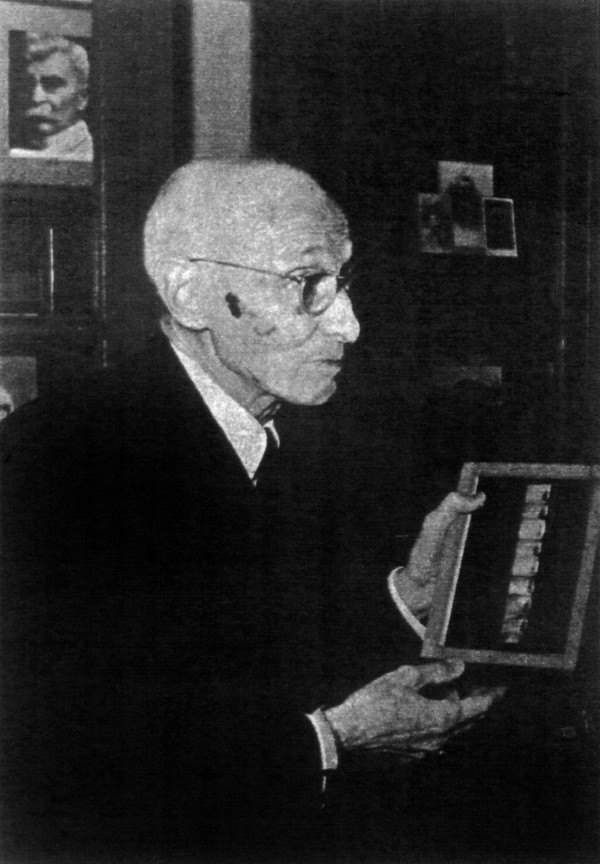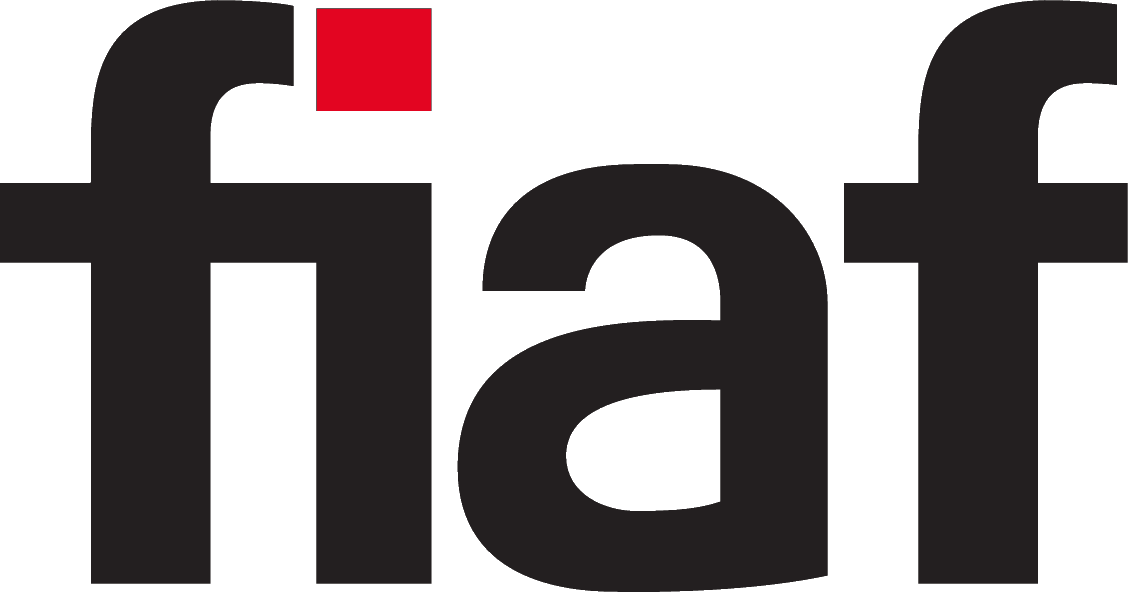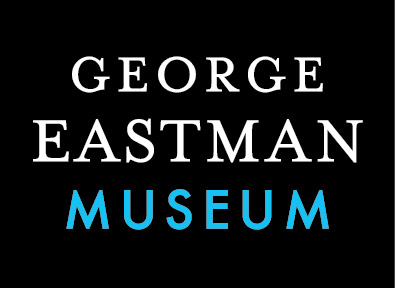Cardini 50mm film(1896–1896)
A prototype 50mm film camera built in Argentina in 1896.
Film Explorer

Eugenio Cardini’s film format used unperforated 50mm film manufactured by Eastman Kodak.
Design by Christian Zavanaiu.
Identification
Unknown
1
Unknown
B/W
Likely none.
History
The technical history of early Argentine cinema has traditionally been thought of as a chronology of imported devices – an assortment of foreign apparatus that arrived in the country at the turn of the twentieth century, which were used to produce the first national cinematographic recordings. However, as in other Latin American countries, there were, indeed, locally produced pioneering inventions that have unfortunately been lost in the mists of time, after being rapidly superseded by more market-dominant technologies. Among the local cinema pioneers, who challenged this foreign technical dependence, was Eugenio Cardini who stands out as one of the earliest to emerge.
The son of a leading iron furniture industrialist, Cardini showed an early interest in photography and cinematography while still a student at the Colegio Nacional de Buenos Aires, and began visiting a photography store, the Casa Lepage, just across the street from the college. Casa Lepage was one of the very first retail businesses to sell cameras and film supplies in Argentina – it became the birthplace of an Argentine national cinema, producing some of the first domestic images and newsreels from around 1897. Through this meeting place, Cardini established, and maintained, close relations with other pioneering Argentine filmmakers, such as Max Glücksmann, Eugenio Py and, indeed, the Casa’s owner Enrique Lepage himself.
In the winter of 1896, after seeing Edison's “prodigious” Kinetoscope in a parlor on Florida Street, Buenos Aires, Cardini set about designing his own motion picture film camera that, although rudimentary, was one of the very first built in South America. His camera used unperforated 50mm film – unlike the perforated 35mm film used in Edison’s Kinetoscope machines – and was functional enough to shoot some brief test footage, although there is scant evidence to suggest that Cardini was able to print, or project, this footage. Sadly, Cardini’s groundbreaking device has been almost completely overlooked by Argentine film historiography, and today he is largely remembered for his other accomplishments, having shot some of the country’s earliest films with a Lumière camera which he purchased in Paris in October 1897. Currently, six of his short films, filmed in 1902, are partially or fully preserved, including documentary footage, in addition to the first two fiction films shot in the country: Escenas Callejeras and En casa del fotógrafo, in which he experimented with innovative narrative devices.
But Cardini's camera may not have been the only one built in the country at such an early date. In his unpublished memoirs, the itinerant businessman Federico Figner claims that during a stay in Buenos Aires, in January 1896, taking advantage of a batch of raw film he had bought to shoot for his Kinetoscope show, he decided to build his own film camera along with a film perforator and a device to develop and print the negatives. According to Figner, he finally succeeded after two months of hard work. He started by filming some scenes of cars and passers-by moving through the city streets. Shortly after, Figner accepted a request from the famous clown Frank Brown, who invited him to the city of Rosario to show films in his circus. According to research by Brazilian historian Paulo Roberto Ferreira (1986) – who had access to Figner's memoirs in Brazil – and information gathered by various sources since then, the films were shot and screened between March and April 1896, that is, at least three or four months before those of Cardini. However, the first press reports of these screenings date to November 1896. On November 15, the newspaper El Orden advertised a show by Frank Brown's company in the city of Rosario, in which “the exhibition of the ‘Cinematógrafo Argentino’, directed by Professor Mr. Figner" was scheduled (El Orden, November 15, 1896). On the November 24, El Diario de Buenos Aires announced that “new views taken from various social events in Buenos Aires, a variety of moving pictures of the Plaza de Mayo and different groups of carriages will begin to be exhibited at Figner's cinematograph on Florida Street between Piedad and Cangallo” (El Diario, November 24, 1896). Towards the end, the ad mentions that “the new views must be of interest, since they have been taken with the only device that has arrived in the Capital”, raising the question of whether it was in fact the same device allegedly created by Figner.
Regardless of which camera was built first, the mere existence of either of them would rewrite the established chronology of early filming and projection in South America. However, the loss of both devices and the absence of any other primary sources relating to these early local inventions, prevent us from reaching definitive conclusions.

Argentinian film pioneer Eugenio Cardini photographed in 1960, holding the frames he shot with the 50mm camera he invented in 1896.
Carlos Barrios Barón Collection. Taken from the book Barrios Barón, Carlos (1995). Pioneros del cine en la Argentina: Cardini, Py y Ducrós Hicken. Buenos Aires: C. Barrios Barón.
Selected Filmography
A test film. The only known film shot with Cardini’s 50mm camera.
A test film. The only known film shot with Cardini’s 50mm camera.
Technology
There are no known patents for Cardini's camera and all we know about it stems from the writings of Carlos Barrios Barón, one of the first historians to bring to light this important Argentinian cinema pioneer. Barrios Barón was able to interview Cardini before his death in 1962, making his writings the best available source for reconstructing the characteristics of Cardini’s early camera. According to information gathered in these interviews, the film camera was constructed in a little more than a week, “using mainly the gears of an alarm clock and wooden parts, ordered from different operators” (Barrios Barón, 1960: p. 59). To set it working, Cardini used “Kodak film, 50 millimeters wide and about 60 centimeters long” (Barrios Barón, 1960: p. 59), possibly he was using Kodak roll film “102”, which was 2-in wide (50.8mm) and was introduced in 1895, which he would have acquired from the renowned Casa Lepage. The camera worked with an electric motor powered by an accumulator and “consisted of a mahogany box, in which the unperforated film was pulled by friction between two pairs of wooden rollers covered with rubber. The exposure intermittence was achieved by means of two sprocket wheels, placed at the end of the lower wheels, and one of which had a certain number of teeth removed in certain sections. The shutter, synchronized with the traction rollers, rotated in front of the lens. It consisted of two disks that allowed for exposure variation” (Barrios Barón, 1960: p. 59). Once the device was built, Cardini filmed some images of a man sitting in front of a table preparing to have a drink, photographic reproductions of some of the frames have survived to today. The outcome, however, did not convince him: “The filmed images only covered a part of the sensitive stock and the film sometimes slipped between the rollers, causing interruptions and unintentional double exposures. Moreover, the scene framing was faulty” (Barrios Baron, 1960: p. 59). Not satisfied with this first experience, Cardini “planned and had a second one built, with bronze gears and an eccentric system which, when hitting the unperforated film, would make it advance behind the lens. But this film was not satisfying either” (Barrios Barón, 1995: p. 17).
Unfortunately, neither Cardini's camera, nor the films he shot with it, seem to have survived. We do know that in May 1960 he still had some preserved frames shot with his device in 1896, as Barrios Barón photographed Cardini holding a short section of film, which he had framed. Shortly after his death in 1962, the Comi & Pini auction house in Buenos Aires held a large public auction of furniture and objects belonging to the pioneer. Among the auctioned pieces are recorded more than 70 photographic items – however, there is no mention of the camera, or the film it produced, being among them. A recent contact with several of his relatives has revealed that these items are not held by his family either. Therefore, the reproductions included here are the only vestiges of this pioneering device.

Photograph reproducing a set of frames taken by Argentinian film pioneer Eugenio Cardini in 1896 with a camera he invented that used a roll of unperforated 50mm Kodak film.
Carlos Barrios Barón Collection. Taken from the book Barrios Barón, Carlos (1995). Pioneros del cine en la Argentina. Cardini, Py y Ducrós Hicken. Buenos Aires: C. Barrios Barón.
References
Barrios Baron, Carlos (1960). “Cine Argentino en 1896”. Revista Vea y Lea, 339:9 (Jun.): pp. 58–62.
Barrios Barón, Carlos (1995). Pioneros del cine en la Argentina. Cardini, Py y Ducrós Hicken. Buenos Aires: C. Barrios Barón.
Bordigoni, Lorena (2021). “De San Cristóbal a Lodz. El largo periplo de Eugenio Cardini y sus obreros”. Vivomatografías. Revista de estudios sobre precine y cine silente en Latinoamérica, 7 (Dec.): pp. 98–111. Available at: http://www.vivomatografias.com/index.php/vmfs/article/view/377 (accessed May 11, 2025).
Caneto, Guillermo et al. (1996). Historia de los primeros años del cine en la Argentina (1895–1910). Buenos Aires: Fundación Cinemateca Argentina.
Cappa, Carolina (ed.) (2019). Nitrato argentino. Una historia del cine de los primeros tiempos. Buenos Aires: Museo del Cine.
Cuarterolo, Andrea (2013). De la foto al fotograma. Relaciones entre cine y fotografía en la Argentina (1840–1933). Montevideo: CdF Ediciones.
Paulo Roberto (1986). “Do kinetoscópio ao omniographo”. Revista Filme Cultura, 47 (Aug.): pp. 14–21.
Related entries
Author
Andrea Cuarterolo holds a PhD in History and Theory of the Arts from the University of Buenos Aires. She is a Researcher at the Consejo Nacional de Investigaciones Científicas y Técnicas (CONICET), where she specializes in the study of Argentine and Latin American photography and cinema. She teaches at the University of Buenos Aires and at the Master Program in Public History at the National University of Quilmes. She is the author of De la foto al fotograma: Relaciones entre cine y fotografía en la Argentina 1840–1933 (2013), and co-editor of the volumes Giros históricos de los cines regionales en Argentina y América Latina: definiciones, delimitaciones y disputas históricas (2023), Cines regionales en cruce: un panorama del cine argentino desde un abordaje descentralizado (2022), Pantallas transnacionales. El cine argentino y mexicano del período clásico (2017), and Diez miradas sobre el cine y audiovisual (2018). She edits, with Georgina Torello, the journal Vivomatografias, which focuses on Latin American precinema and early cinema.
Enrique Bouchard, Carlos Barrios Barón, Museo del Cine “Pablo Ducrós Hicken”, Familia Cardini.
Cuarterolo, Andrea (2025). “Cardini 50mm film”. In James Layton (ed.), Film Atlas. www.filmatlas.com. Brussels: International Federation of Film Archives / Rochester, NY: George Eastman Museum.
Margaux Chalançon


